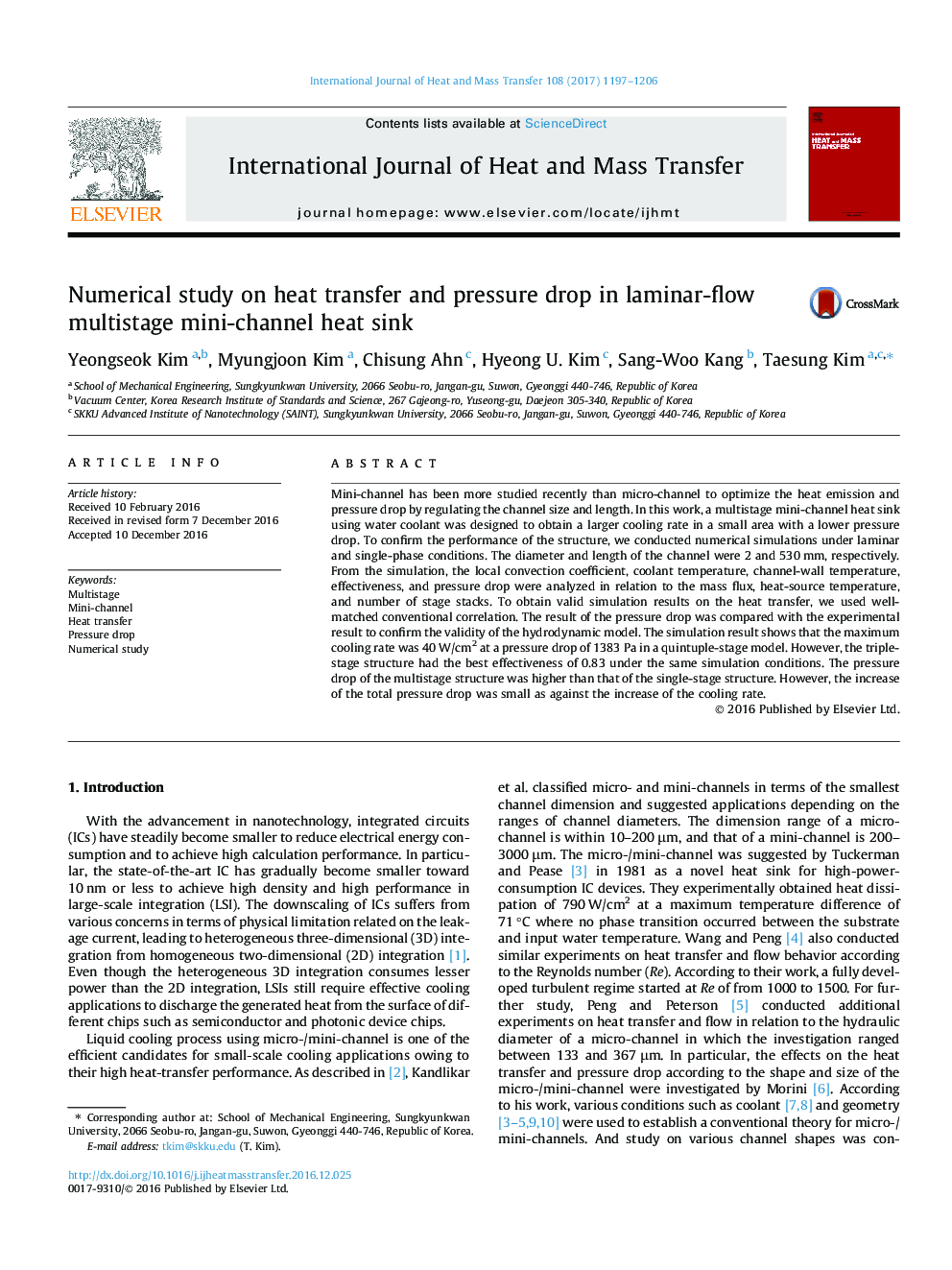| Article ID | Journal | Published Year | Pages | File Type |
|---|---|---|---|---|
| 4994350 | International Journal of Heat and Mass Transfer | 2017 | 10 Pages |
Abstract
Mini-channel has been more studied recently than micro-channel to optimize the heat emission and pressure drop by regulating the channel size and length. In this work, a multistage mini-channel heat sink using water coolant was designed to obtain a larger cooling rate in a small area with a lower pressure drop. To confirm the performance of the structure, we conducted numerical simulations under laminar and single-phase conditions. The diameter and length of the channel were 2 and 530Â mm, respectively. From the simulation, the local convection coefficient, coolant temperature, channel-wall temperature, effectiveness, and pressure drop were analyzed in relation to the mass flux, heat-source temperature, and number of stage stacks. To obtain valid simulation results on the heat transfer, we used well-matched conventional correlation. The result of the pressure drop was compared with the experimental result to confirm the validity of the hydrodynamic model. The simulation result shows that the maximum cooling rate was 40Â W/cm2 at a pressure drop of 1383Â Pa in a quintuple-stage model. However, the triple-stage structure had the best effectiveness of 0.83 under the same simulation conditions. The pressure drop of the multistage structure was higher than that of the single-stage structure. However, the increase of the total pressure drop was small as against the increase of the cooling rate.
Related Topics
Physical Sciences and Engineering
Chemical Engineering
Fluid Flow and Transfer Processes
Authors
Yeongseok Kim, Myungjoon Kim, Chisung Ahn, Hyeong U. Kim, Sang-Woo Kang, Taesung Kim,
